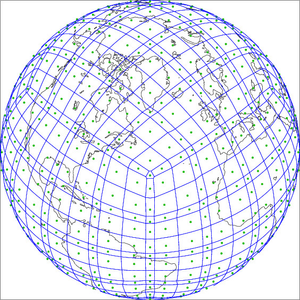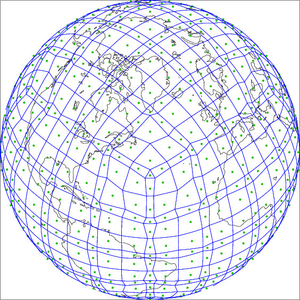...
For conservative remapping, the areas of these polygons must match the weight of each GLL node. If we construct this dual grid in the usual way, by connecting the centers of all the subcells shown in the subcell grid, the areas of the cells will in general not match the GLL weights. We thus have to perform an iteration, similar to spring dynamics, tweaking the polygons until the areas are correct. We have several different algorithms to do this (examples shown below). The resulting polygons can be a little odd. First plot below (chevrons): we allow pentagons and hexagons so that the algorithm will converge faster and to more uniform cells, but this means that some of them will be slightly non-convex as some of the hexagons turn into chevrons. ESMF can handle non-convex cells, but other utilities may require they be convex. Second plot below (natural): If we only dual grid vertices at cell centers of the subcell grid, we get convex polygons, but they are less regular. Third plot below (pentagons): The dual grid files currently used for cubed-sphere grids in ACME selectively inserts pentagons where needed. Only the first two approaches (chevrons and natural) work with unstructured variable-resolution grids. The pentagon approach only works with cubed-sphere grids.
Meta data files: (not used directly by the ACME model, but used by the various pre- and post-processing utilities
...


